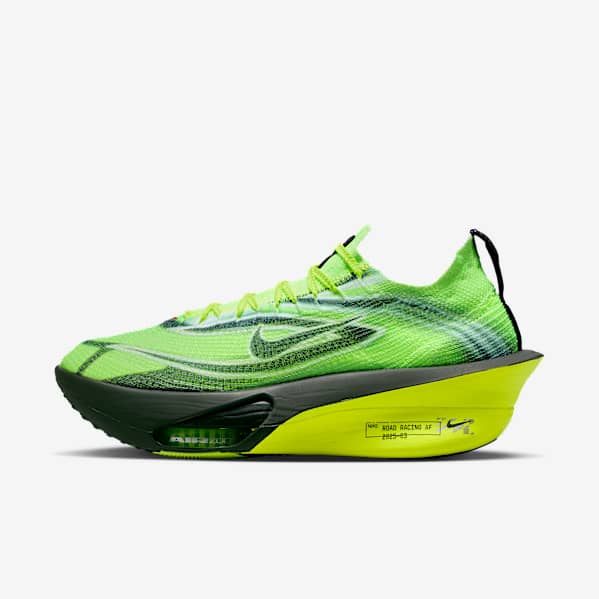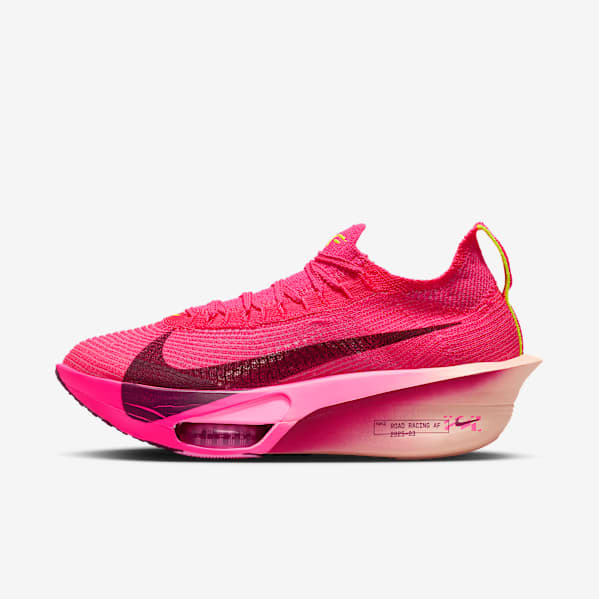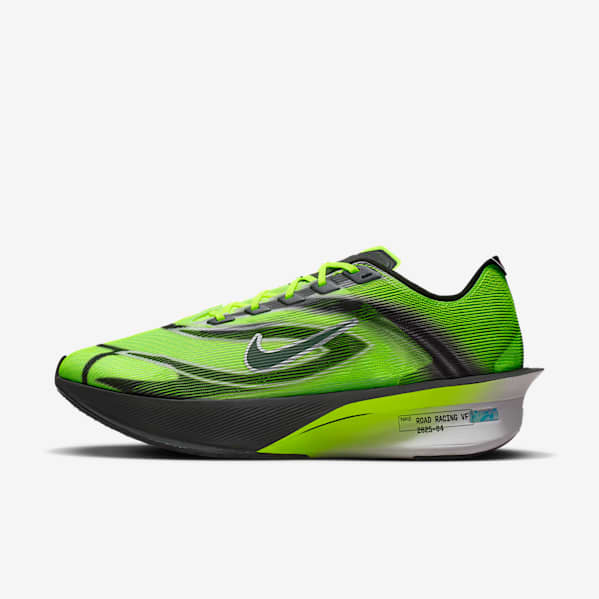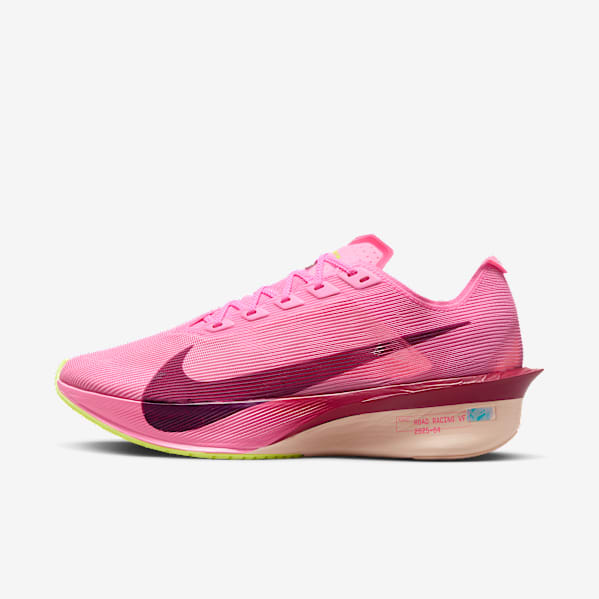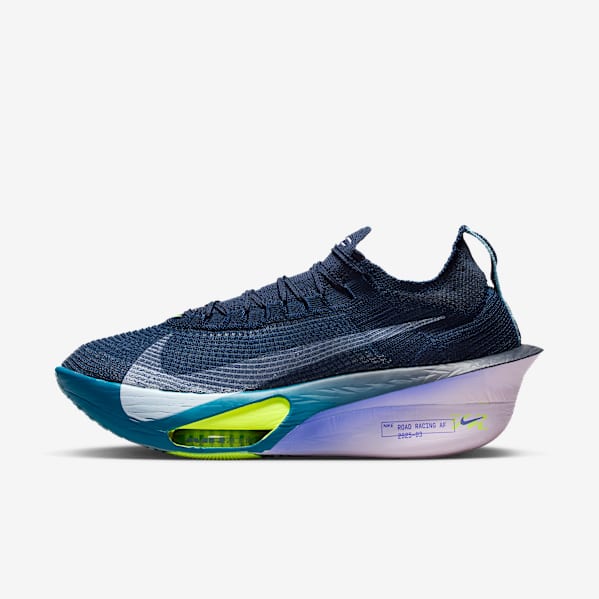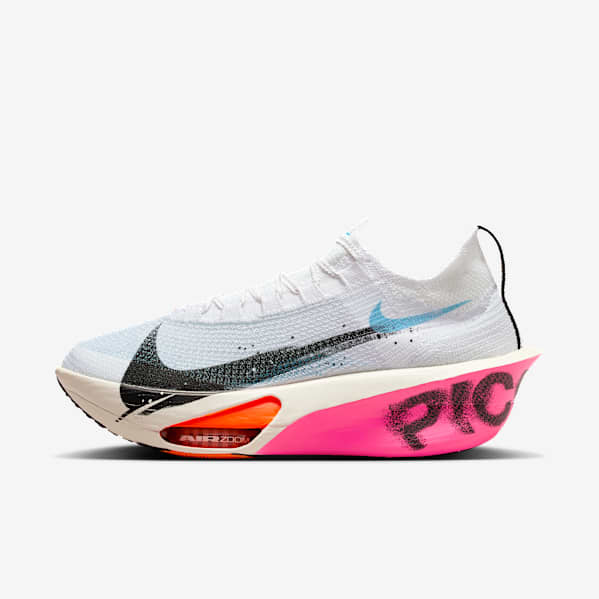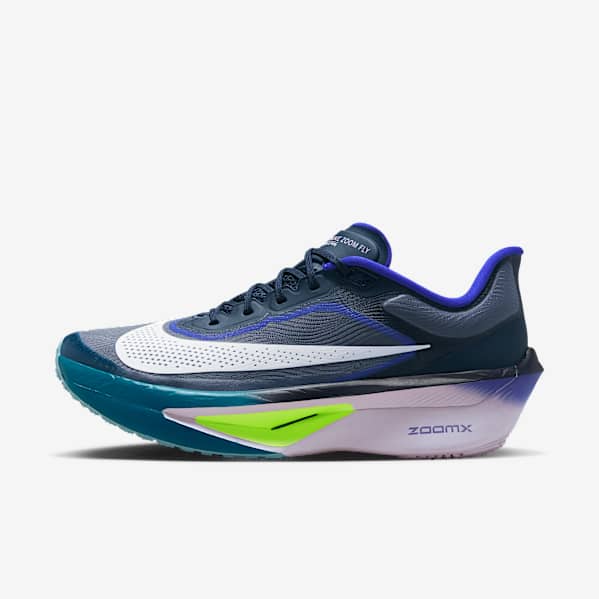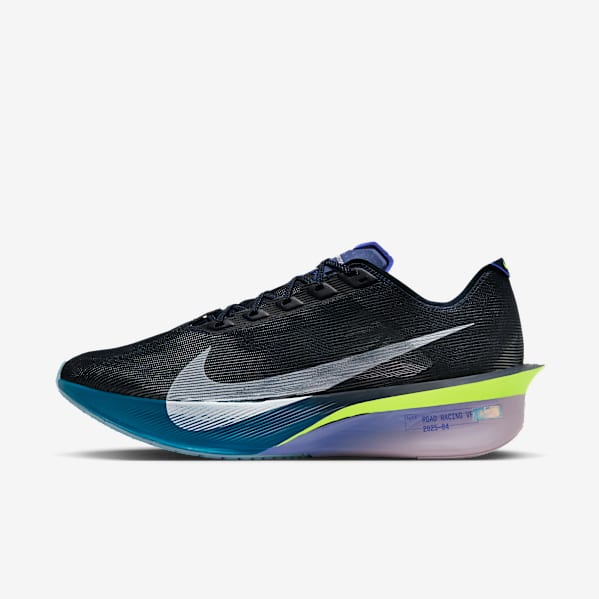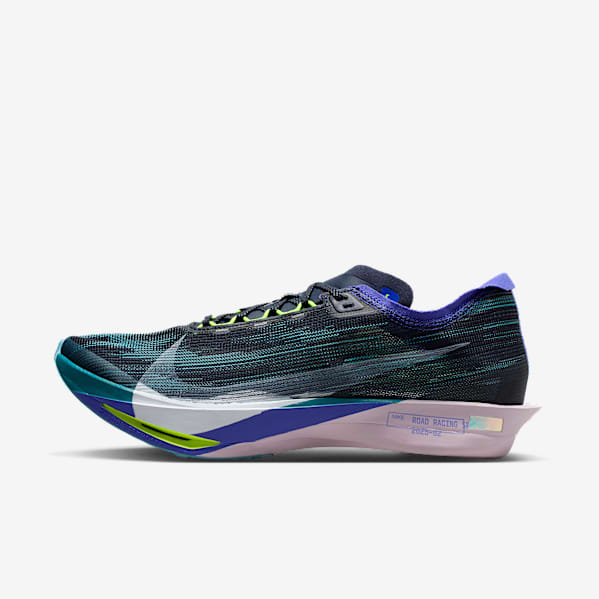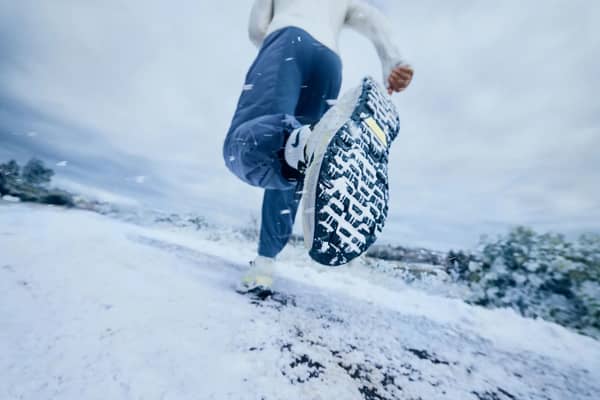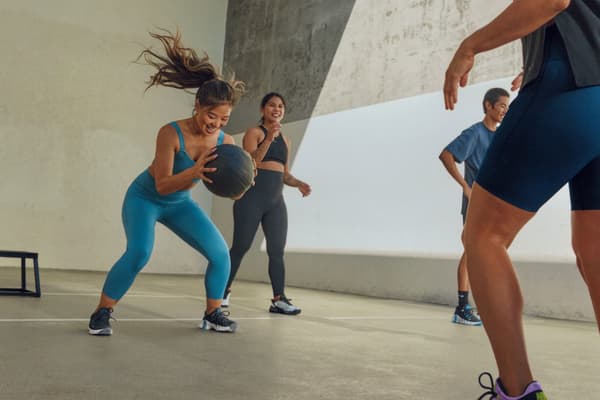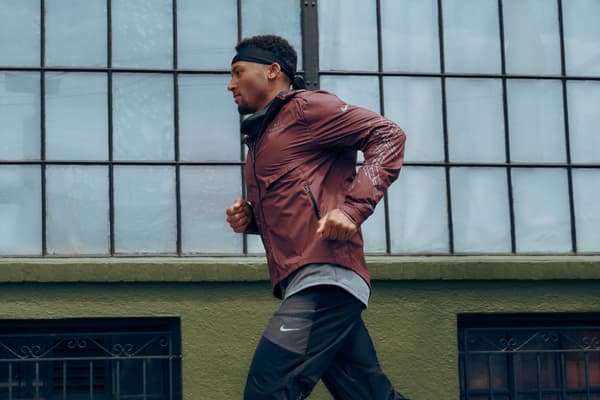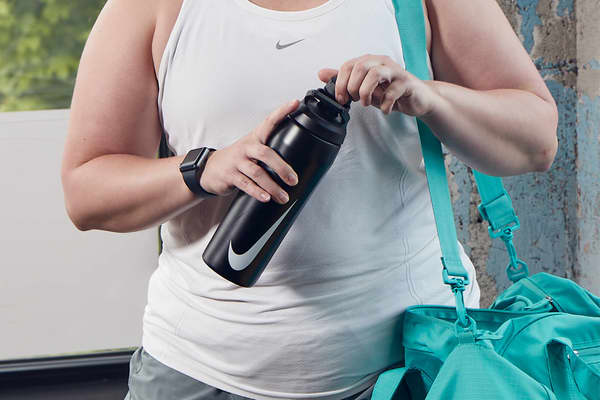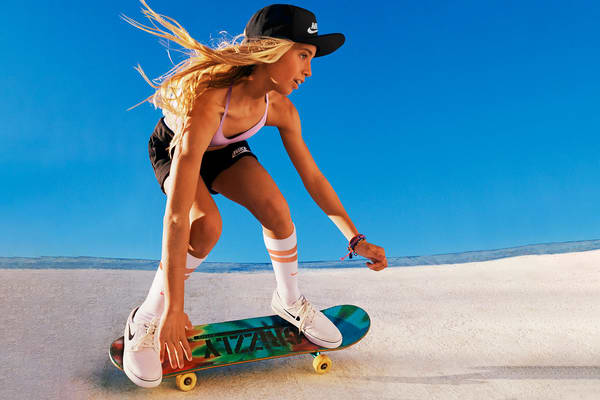Don't miss the last day to order. Learn More.
How to Pick the Right Clothes and Shoes for Race Day
Buying Guide
Your clothing and gear choices can make all the difference in your race. Here's how to dress to win, or at least break that PB.

The last thing you need to worry about the morning of your race is what you're going to wear. But the clothes and gear you choose can make or break your race experience. The best solution is to take time and effort before the big day to find quality shoes and apparel that can go the distance. It's essential to do this prep well ahead of toeing the starting line. That way, all you have to worry about come race day is beating that PB.
Follow these guidelines when deciding what to wear on race day.
3 Tips for Selecting the Best Gear for Your Race
Follow these tips to plan your best race day outfit, from running shoes to running shorts, regardless of race length or weather conditions.
- Check the forecast. Keep an eye on the weather forecast during the weeks leading up to the race. Bear in mind that weather predictions change, so be sure to check regularly.
- Go light. "A rule of thumb is to dress for running as though it's 15–20 degrees warmer than it actually is", says Amie Dworecki, MA, CEO and head coach of Running with Life. You may feel cooler at the outset, but your body will heat up once you start running.
- Practice, practice, practice. "Make sure you practise wearing what you plan to run in to avoid any race day surprises", says Nicole Gainacopulos, CSCS, running coach and founder of Momentum of Milwaukee. Try to wear your race day outfit in different weather scenarios and note how successful the outfit was in your workout log or activity tracker. "That is a great way to catalogue, so you're not guessing each time the weather changes", Gainacopulos says. Take your race day shoes for a few practice runs, too.

What to Wear for Cold-Weather Races
There are a lot of factors to consider when dressing to race in the cold. If you skimp on layers, you could spend the bulk of the race just trying to warm up. But if you overdo it, you could get bogged down by extra weight. Find a happy medium with these cold-weather clothing tips.
Layer up. Dress in layers so that you feel comfortable at the starting line. Go for running tights or trousers if it's cool, or fleece-lined trousers if it's downright cold. Depending on the temps and weather conditions, you may want to add a lightweight quarter-zip and/or a jacket that can withstand rain and wind. Peel away clothing as you tick off the miles, Dworecki says.
Opt for moisture-wicking fabrics. Just because it's cold outside doesn't mean you won't sweat under your layers. And if you sweat through your clothes, they'll not only get heavy, but you'll also lose body heat. To stay warm and dry mile after mile, steer clear of cotton and opt for a moisture-wicking sports bra (if needed) and long-sleeve base-layer top. "This will keep you dry and your temperature more regulated", Gainacopulos says. Look for clothes made from moisture-wicking materials like merino wool or polyester.
Consider the pre-race journey. Getting to the starting line may involve a long walk or bus ride, waiting in a corral, or standing around for an extended period of time. If it's cold and/or rainy, you may want to add an extra layer such as a large bin bag or long-sleeved top that you can toss to the side just before you start running, Dworecki says. (Note: Many race organisers donate discarded clothes found on the sidelines.) Practise wearing the bin bag or temporary top in your training runs so you know you can remove it easily on race day, she says.
Note your race distance. How you dress for a marathon is different to how you dress for a 5K. After all, you're likely to experience more temperature changes throughout 26.2 miles than 3.1 miles, Gainacopulos says. You'll want to pay close attention to layering and pack gear that will cover a wide range of temps and weather conditions if you're running a marathon or a half-marathon. If you're running a 5K or 10K, you can probably get away with fewer layers. Leave your warm gear in your car or entrust it to a friend.
Invest in a great jacket. Running jackets can be pricey, but they're worth their weight in gold. A solid men's running jacket or women's running jacket can help you cut back on layers while offering helpful features—ample pockets for your energy gels and lip balm, for example—that make your race a smoother experience. Gainacopulos suggests finding a jacket that meets the following criteria:
- Wind-resistant
- Water-resistant
- Reflective design
- Large enough to fit layers underneath without being bulky
Don't forget cold-weather accessories. Moisture-wicking gloves or mittens and a beanie or headband are essential for any cold-weather race. Make sure you have a safe place to tuck these items if you start to overheat. "I always start any race or run that is 10 degrees or lower with gloves on, and then usually within a few miles, I stash them away in a zip pocket", Gainacopulos says.

What to Wear for Warm-Weather Races
The benefit of racing in warmer weather is that you don't need many layers or gear. However, that doesn't mean your clothing choices are any less critical. Here are some tips for dressing cool when the course heats up.
Prioritise moisture-wicking. Look for running tops, bottoms and undergarments advertised as "moisture-wicking", such as Nike Dri-FIT clothing. This way, you can be sure your clothes won't weigh you down once you start to sweat. The fabric will draw the sweat away from your skin to the outer layer, where it will dry fast. Top moisture-wicking fabrics include polyester, nylon, bamboo, merino wool and polypropylene.
Less is more. If it's scorching outside, pair a technical tank or tee with running shorts or capris. Shorts with form-fitting tights or briefs are a good choice for their added support and chafe protection.
Extras make a big difference. When you're racing in the heat, add-ons such as sunglasses, a moisture-wicking hat or visor, moisture-wicking socks and non-chafing underwear can be life-savers. You may also want to consider anti-chafing nipple coverings and/or lubricant. Just make sure you practise wearing these items during your training sessions, so you know they'll work for you.
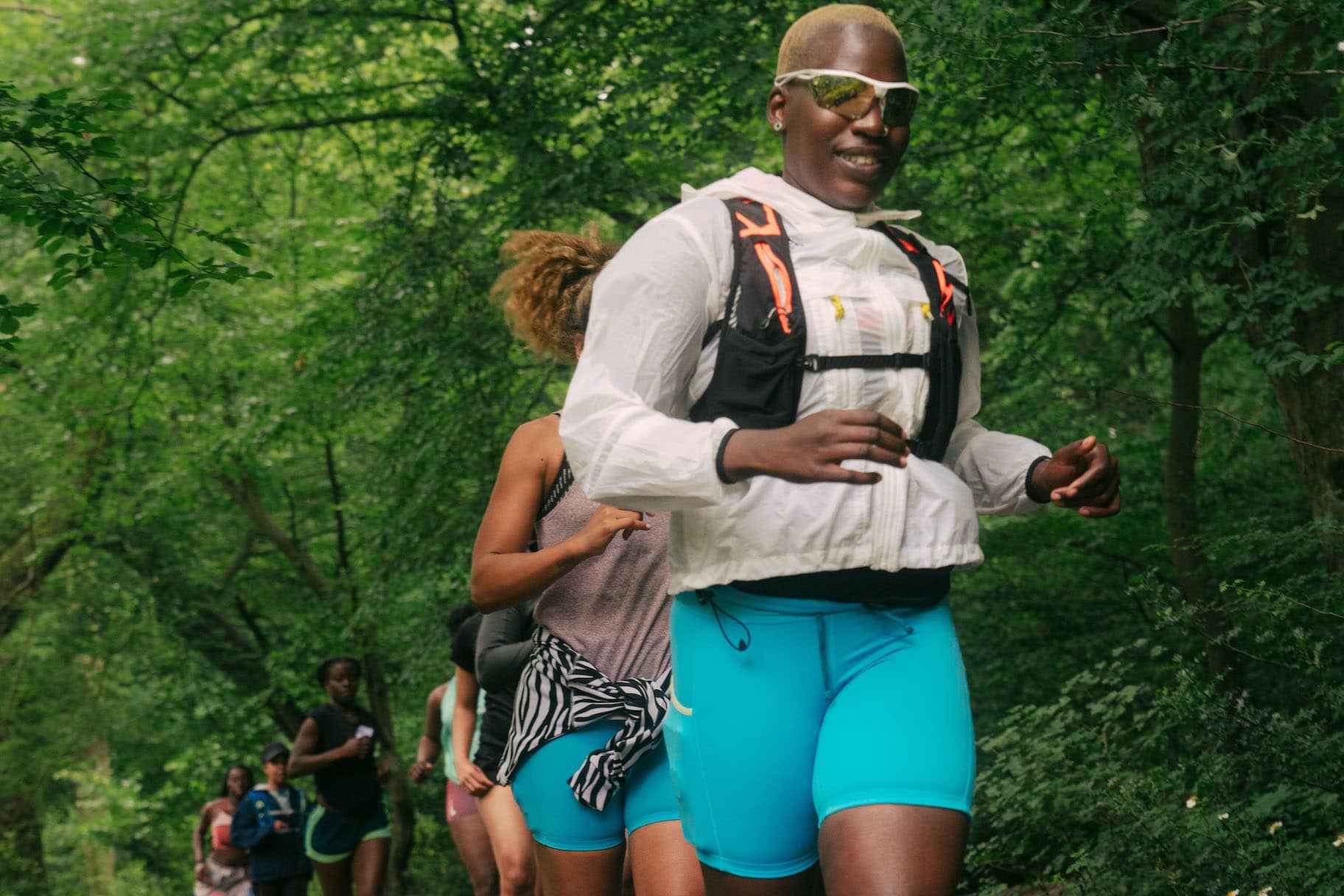
What to Wear for Trail Races
Trail races are a different beast. While your clothing choices share many similarities with road race gear, you'll have to make a few key tweaks for the trail. Use these suggestions when planning your trail race outfit.
Safeguard your skin. Trails can be full of branches and brambles. Wear tights or pair your shorts with longer socks to protect your legs from scratches.
Layer up. Remember that a trail run can take longer than a road run of the same distance, simply due to differences in elevation and terrain. Weather conditions can also be tougher to predict for the same reasons. "Sometimes, the top of a mountain can have dramatically different conditions from the base", Dworecki says.
Be sure to dress in layers if you're doing a longer trail race with multiple aid stations set up along your route. "Layers will be key for cooling off on long, difficult climbs and warming back up on summits or downhill descents", Dworecki says. Start with a moisture-wicking base layer top and sports bra (if needed). Then add a lightweight quarter-zip or long-sleeve top and top with a running jacket that can resist both wind and water.
Bring a pack. Consider bringing a backpack-style hydration pack if you're running a long trail race with elevation changes. This way, you can store food, extra layers and any gear you need on the trail.

What Shoes to Wear on Race Day
Many runners prefer to invest in a pair of race-specific running shoes. Racing shoes are lighter for maximum performance and speed, while training shoes are heavier with more cushion to absorb impact.
The right racing shoes for you will partly depend on the race length and terrain. Here are a few categories to consider:
- Trail races. Uneven terrain calls for running shoes with plenty of traction and stability. Check out trail running shoes to find a pair that can carry you up and over any mountain.
- Long-distance road races. Marathons and half-marathons require you to spend a great deal of time on your feet. Lighter shoes can help with speed, but you'll probably still want a bit of cushioning to help with shock absorption.
- Shorter road races. Tackling a 5K or 10K? You may be able to get away with minimal support and cushioning.
It's essential to take your personal preferences into account when shopping for racing shoes. Some runners prefer a snug fit, whereas others like extra room to accommodate foot swelling during longer runs. Take note of what you need from your racing shoes so you can find a pair that really suits you.
Once you've settled on a pair of Nike racing shoes, take them for a few test runs to see how they hold up. Don't like 'em? Return your running shoes within 60 days for a full refund.

What to Wear Post-Race
Don't get so wrapped up in your race outfit that you forget to pack anything for after the race. "After your race is done, you'll want to change out of your sweaty clothing quickly and put on some dry clothing", Gainacopulos says.
Many races even have drop bags so you can pick up fresh clothes after you cross the finishing line, Dworecki says.
Stow these items in your post-race drop bag:
- Dry socks and shoes. These can be especially handy if it's expected to be rainy or muddy. This way, you're not squishing around in wet socks and shoes all the way home, Dworecki notes. If it's cold outside, you may also want to bring a dry pair of gloves and a hat or headband.
- Small towel. Use this to wipe away sweat, mud and tears. Or bring cleansing face and body wipes if you prefer a deeper clean.
- Sweatshirt and trousers. If you don't plan on changing near the race site, be sure to pack something you can quickly pull on over your race outfit. Otherwise, bring a full change of clothes.
- Toiletries. You may want to refresh your deodorant and sun cream once you've towelled off.
- Snacks. You're bound to find plenty of post-race goodies such as bananas and energy bars at the finishing line. But if you have a sensitive stomach, you may want to pack foods you know you can handle.
